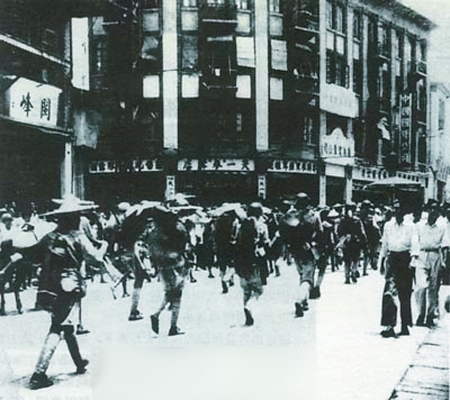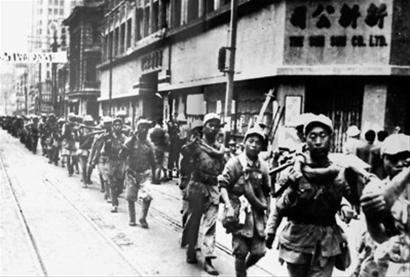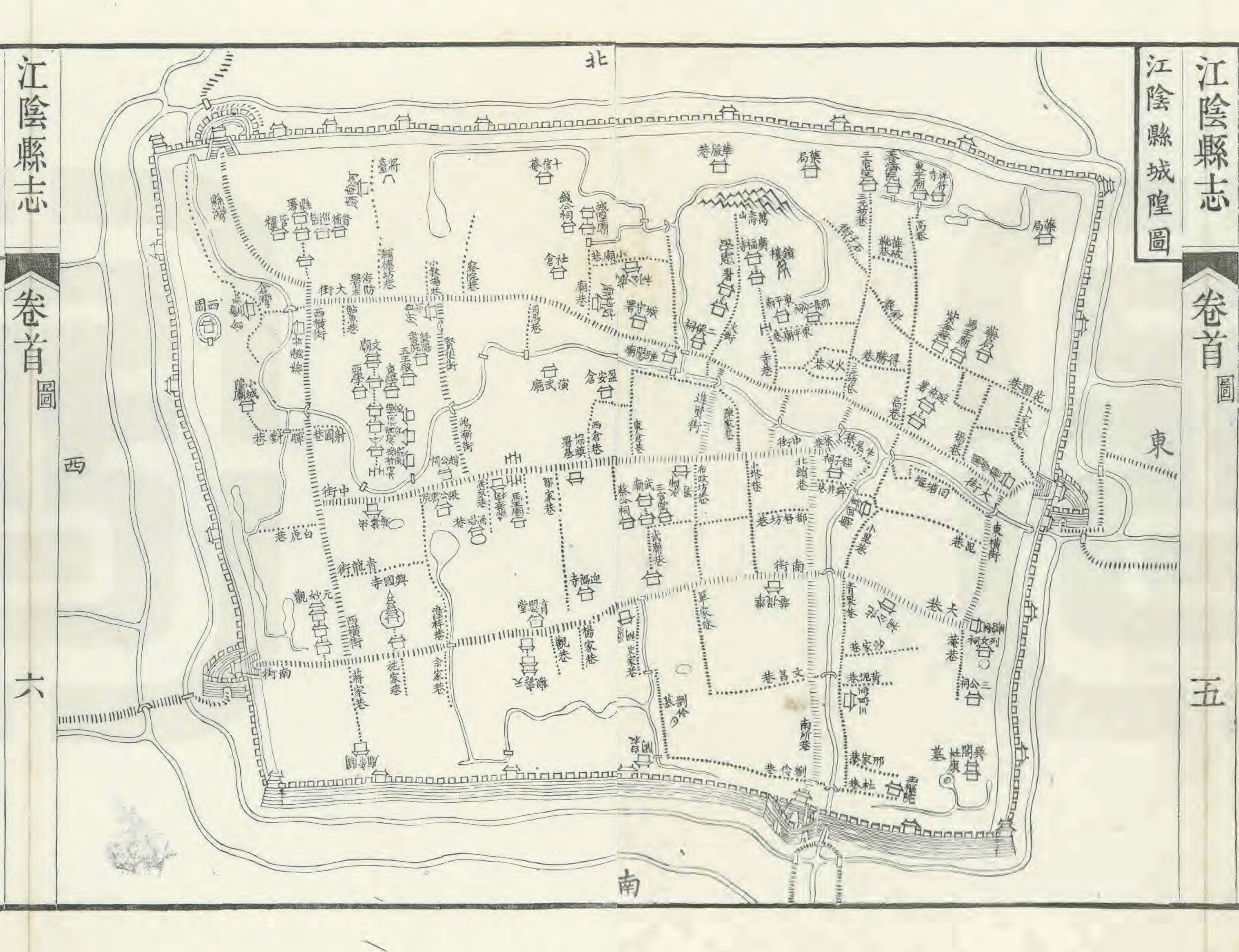|
28th Army (People's Republic Of China)
The 28th Group Army was an army corps of the Chinese People's Liberation Army that existed from 1949 to 1998. From 1952 to 1971, the 28th Army was based in Putian, Fujian and belonged to the Fujian Military Region. From 1971 to 1998, this army corps belonged to the Beijing Military Region and was based in Shanxi Province, initially in Houma and then in Datong. At the time of its dissolution in 1998, the 28th Army was composed of the 82nd, 83rd and 205th Infantry Divisions, the 7th Armored Division, an artillery brigade, an anti-aircraft brigade, an engineer regiment, a communication regiment and a reconnaissance battalion. The army corps’ unit ID number was 51366. History Formation and lineage The 28th Group Army was formed in February 1949 out of the 10th Column of the East China Field Army and consisted of the 82nd, 83rd and 84th Divisions. The 28th Army traces its lineage to the Eighth Route Army’s guerilla units in the Bohai Military District of Shandong during ... [...More Info...] [...Related Items...] OR: [Wikipedia] [Google] [Baidu] |
Beijing Military Region
The Beijing Military Region was one of seven military regions for the Chinese People's Liberation Army. From the mid 1980s to 2017, it had administration of all military affairs within Beijing city, Tianjin city, Hebei province, Shanxi province, and Inner Mongolia Autonomous Region. The Region is mainly responsible for defending the People's Republic of China from Mongolia and Russia, and also protects the capital of China, and had the largest number of military personnel of any of the seven regions active from 1985-2017. The Region has now been disbanded and superseded by the Central Theater Command and Northern Theater Command. Both the 63rd and 65th Corps/Group Armies were stationed in the Beijing area after returning from the Korean War and remained in the region ever since, becoming Group Armies after 1985. The 13th Air Force Corps was stationed at Shijiazhuang in Hebei Province from 1971 to 1976. On 26 October 1988 the 17th Air Division was reorganized into the Beijing M ... [...More Info...] [...Related Items...] OR: [Wikipedia] [Google] [Baidu] |
Song Shilun
Song Shilun (; 1907–1991), né Song Jirao (宋际尧, named from Chinese legendary King Yao), alternative name Song Zhiguang (宋之光), born September 10, 1907 in Liling, Hunan Province, was a general of the People's Liberation Army of the People's Republic of China. General Song had graduated from Whampoa Military Academy and participated in the Long March, Anti-Japanese war, Chinese civil war and Korea war, respectively. He died September 17, 1991 in Shanghai. Korean War During the Korean War, General Song Shilun commanded the People's Volunteer Army (PVA) 9th Army. His armies fought against the US Army 31st Regimental Combat Team and the 1st Marine Division at the Chosin Reservoir in November–December 1950. Reaction to the government's response to the Tiananmen Square protests During the Tiananmen Square protests of spring 1989, Song Shilun joined former Minister of Defense Zhang Aiping Zhang Aiping (; born January 9, 1910 in Da County, Sichuan; died July 5, 2003 in ... [...More Info...] [...Related Items...] OR: [Wikipedia] [Google] [Baidu] |
Fuqing
(; Foochow Romanized: Hók-chiăng; also romanized as Hokchia) is a county-level city of Fujian Province, China, it is under the administration of the prefecture-level city of Fuzhou. Geography Fuqing is located in the north-central part of Fujian's sea coast, south of Fuzhou and north of Putian. It has a long indented coast line on the Taiwan Strait, to the south of Fuzhou. The northern part of the county-level city, including the city's central urban area, is in the valley of the Longjiang River. The southern part includes a number of peninsulas with highly indented coast. Climate Administrative division Subdistricts: * Yuping Subdistrict () - city center, and location of the city government * Longshan Subdistrict () * Longjiang Subdistrict () * Yinxi Subdistrict () - western part of the main urban area * Honglu Subdistrict () * Shizhu Subdistrict () * Yangxia Subdistrict () Towns: *Haikou (), * Chengtou (), * Nanling (), * Longtian (), * Jiangjing (), ... [...More Info...] [...Related Items...] OR: [Wikipedia] [Google] [Baidu] |
Fuzhou
Fuzhou (; , Fuzhounese: Hokchew, ''Hók-ciŭ''), alternately romanized as Foochow, is the capital and one of the largest cities in Fujian province, China. Along with the many counties of Ningde, those of Fuzhou are considered to constitute the Mindong (lit. Eastern Fujian) linguistic and cultural area. Fuzhou lies on the north (left) bank of the estuary of Fujian's largest river, the Min River. All along its northern border lies Ningde, and Ningde's Gutian County lies upriver. Its population was 7,115,370 inhabitants as of the 2010 census, of whom 4,408,076 inhabitants are urban representing around 61.95%, while rural population is at 2,707,294 representing around 38.05%. As of 31 December 2018, the total population was estimated at 7,740,000 whom 4,665,000 lived in the built-up (''or metro'') area made of 5 urban districts plus Minhou County. In 2015, Fuzhou was ranked as the 10th fastest growing metropolitan area in the world by Brookings Institution. Fuzhou is listed as ... [...More Info...] [...Related Items...] OR: [Wikipedia] [Google] [Baidu] |
Shanghai Campaign
The Shanghai Campaign was a series of battles fought between the nationalists and the communists for the control of Shanghai, the largest city in China in the latter stage of the Chinese Civil War, and resulted in the city being taken over by the communists, who enjoyed numerical superiority. Prelude With a population of six million, Shanghai was the largest city in China in 1949 and provided around a third of the total GDP of China by that time. Both the communists and the nationalists believed that World War III was a real possibility and this perception influenced the strategic decisions of both sides. The nationalists who defended the city had hoped that by using the resources of China's wealthiest city, they could last until World War III when foreign intervention would occur. With foreign intervention, not only they would be able to defend the city, but also counterattack and take China back. If the city could not last until World War III, the nationalists could with ... [...More Info...] [...Related Items...] OR: [Wikipedia] [Google] [Baidu] |
Jiading District
Jiading is a suburban district of Shanghai. It had a population of 1,471,100 in 2010. History Historically, Jiading was a separate municipality/town, until, in 1958, becoming under the administration of Shanghai. In 1993, Jiading's designated was changed from a county to a district of Shanghai. In the early Qing dynasty, which overlapped with Southern Ming, the municipality was infamously known for the "Jiading Massacre", a mass murder carried out by the invading Qing force, led by defected northern Chinese bandit general . In late Qing (in 1853), Jiading city was also known for bandit activities that once captured the city and then Shanghai, as a rebellion of taxation. In 2005, the Jiading district government invested RMB 10 million to build the Shanghai Museum of the Imperial Examination System. Geography Jiading district is located in the northwestern part of Shanghai. It stretches across . It is located about from downtown Shanghai. Climate Jiading has a humid subtr ... [...More Info...] [...Related Items...] OR: [Wikipedia] [Google] [Baidu] |
Taicang
Taicang is a county-level city under the jurisdiction of Suzhou, Jiangsu province, China. The city located in the south of the Yangtze River estuary opposite Nantong, being bordered by Shanghai proper to the south, while the river also delineates much of its northeastern boundary along Chongming Island. Administration Taicang administers 7 towns: History Toponym Taicang as a place name is mentioned in a memorial to the throne of geographer Jia Dan during the Song dynasty, "Where lies to the east of Kunshan nowadays", he supposedly wrote, "is called Taicang, also known as Gangshen". Overview Taicang is a natural port. Under the Yuan, the city reached its peak between 1271 and 1368. Under the Ming, Taicang's Liuhe Harbor was the departure point for Zheng He's treasure fleets. It was also during this period that the shoals in the Yangtze estuary which later became Chongming Island were placed under the supervision of Taicang Prefecture. [...More Info...] [...Related Items...] OR: [Wikipedia] [Google] [Baidu] |
Jiangyin
Jiangyin (, Jiangyin dialect: ) is a county-level city on the southern bank of the Yangtze River, and is administered by Wuxi, Jiangsu province. Jiangyin is one of the most important transport hubs on the Yangtze River, it is also one of the most developed counties in China. With 1,595,138 inhabitants as of the 2010 census, the city is now part of Jiangyin-Zhangjiagang-Jingjiang built-up or metropolitan area with 3,526,260 inhabitants Etymology Jiangyin's name means "River Shade", from its location on the south or shady side of the Yangtze River. History Jiangyin was a township of Yanling (; later known as Piling, ) county initially. Since the township was located in the north of Ji Lake, it was given the name "Jiyang" (). In 281, it was promoted as a county of Piling commandery. In 558, the north-west part was taken away from then Lanling county ( Wujin and its around areas) to create Jiangyin county. It was served as the seat of Jiangyin commandery, of which jurisdiction equa ... [...More Info...] [...Related Items...] OR: [Wikipedia] [Google] [Baidu] |
Yangtze River
The Yangtze or Yangzi ( or ; ) is the longest list of rivers of Asia, river in Asia, the list of rivers by length, third-longest in the world, and the longest in the world to flow entirely within one country. It rises at Jari Hill in the Tanggula Mountains (Tibetan Plateau) and flows in a generally easterly direction to the East China Sea. It is the List of rivers by discharge, seventh-largest river by discharge volume in the world. Its drainage basin comprises one-fifth of the land area of China, and is home to nearly one-third of the demographics of China, country's population. The Yangtze has played a major role in the history of China, history, culture of China, culture, and economy of China. For thousands of years, the river has been used for water, irrigation, sanitation, transportation, industry, boundary-marking, and war. The prosperous Yangtze Delta generates as much as 20% of historical GDP of China, China's GDP. The Three Gorges Dam on the Yangtze is the list ... [...More Info...] [...Related Items...] OR: [Wikipedia] [Google] [Baidu] |
CCP Took Over Foochow
CCP may refer to: Economy or finance * Central counterparty clearing, a method by which a financial institution facilitates transactions in security markets * Common commercial policy, a process by which countries co-ordinate or completely delegate their trade policy Education * Center for Creative Photography, a research facility and archival repository at the University of Arizona, Tucson * Central Colleges of the Philippines, an educational institution in Quezon City, Philippines * Centre for Child Protection, an institute of the Gregorian University dedicated to understanding and preventing sexual abuse in the Catholic Church * Circle City Prep, a public K-8 charter school in Indianapolis, Indiana * Community College of Philadelphia, a community college in Philadelphia, Pennsylvania * University of Chicago Contemporary Chamber Players, an American ensemble dedicated to the performance of contemporary classical music Government, law * Canadians' Choice Party, a ... [...More Info...] [...Related Items...] OR: [Wikipedia] [Google] [Baidu] |






_in_1958.jpg)

